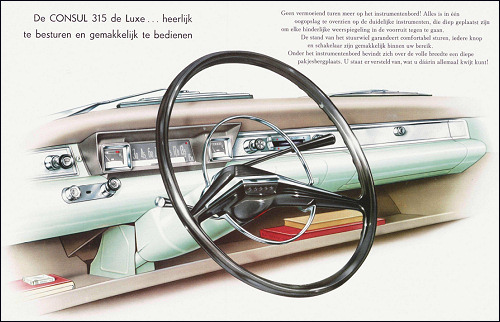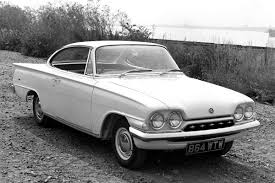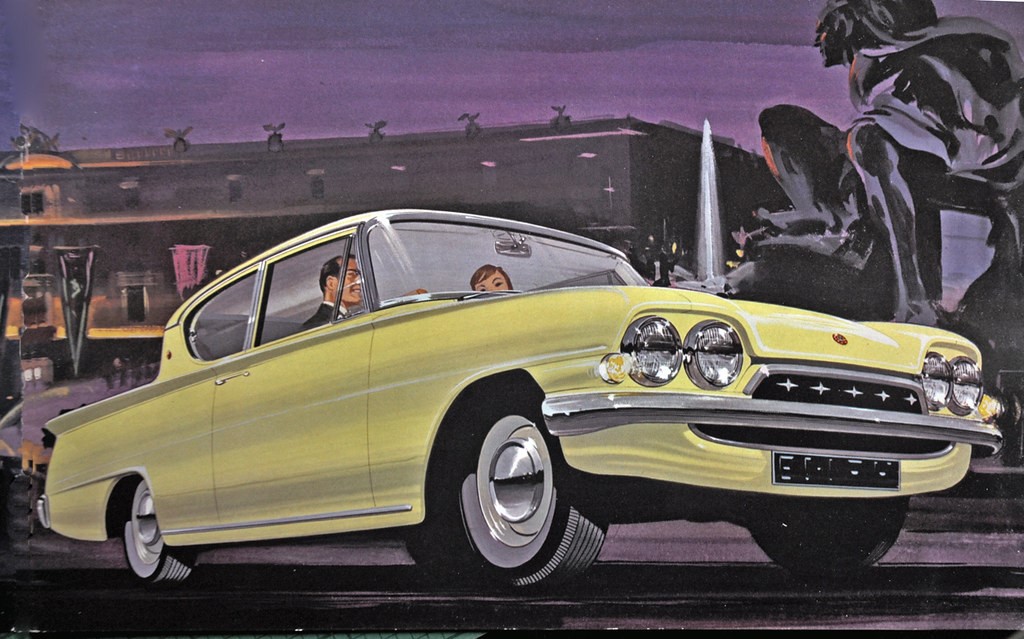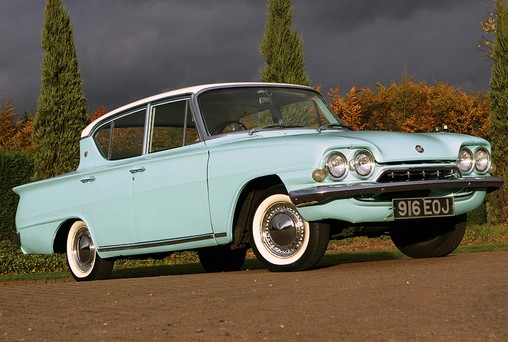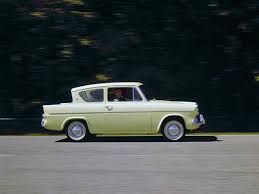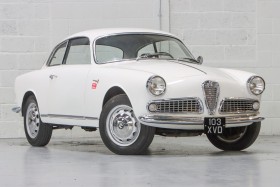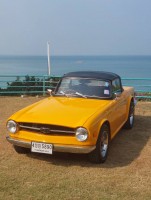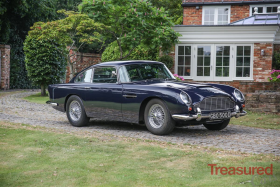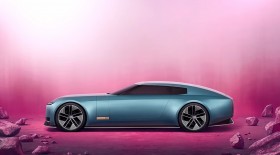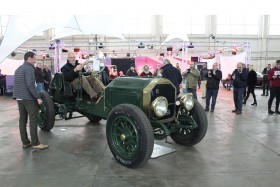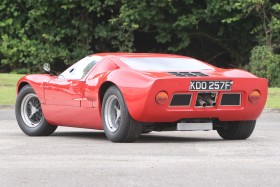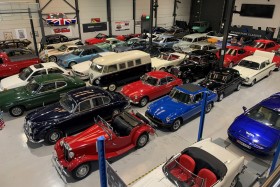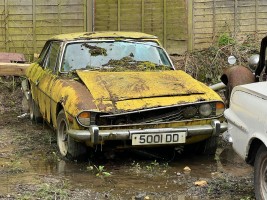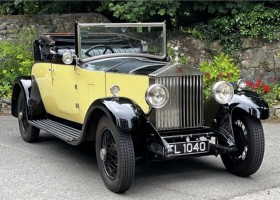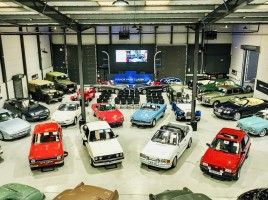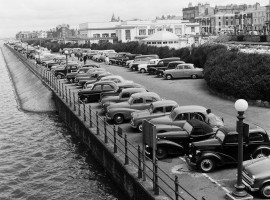the only ford that was born a classic
Consul Classic 315 – late to the party and early to leave.
By: Terry Burgess Wed, 29 Apr 2020
Features
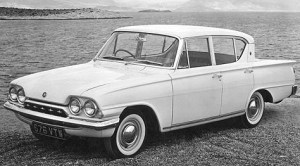
In October 1959 Ford launched the Anglia 105E and the old Anglia 100E became the Popular 100E. The styling was distinctive having a sloping bonnet line, frog-mouth grille and prominent headlights at the front with a reverse-slope rear window and small fins at the rear, but the engineering was really quite conventional with a 1-litre, 4 cylinder pushrod engine and 4-speed gearbox driving the rear axle, drum brakes all round, the usual Macpherson struts at the front and leaf springs at the rear with recirculating ball steering. The new Anglia sold like hot cakes and represented a minor revolution for Ford in the UK in that it had an extremely short-stroke engine with an 8-port cylinder head in place of the archaic long-stroke side-valve of the 100E and was the first UK Ford to have a 4-speed gearbox and electric windscreen wipers, in place of the hopeless vacuum operated wipers still used on the Consul/Zephyr/Zodiac range and the Popular 100E. The new Anglia was a small car for the motorway age, capable of sustained cruising at 60-70mph.
Anglia 105E - the 997 engine could fly!
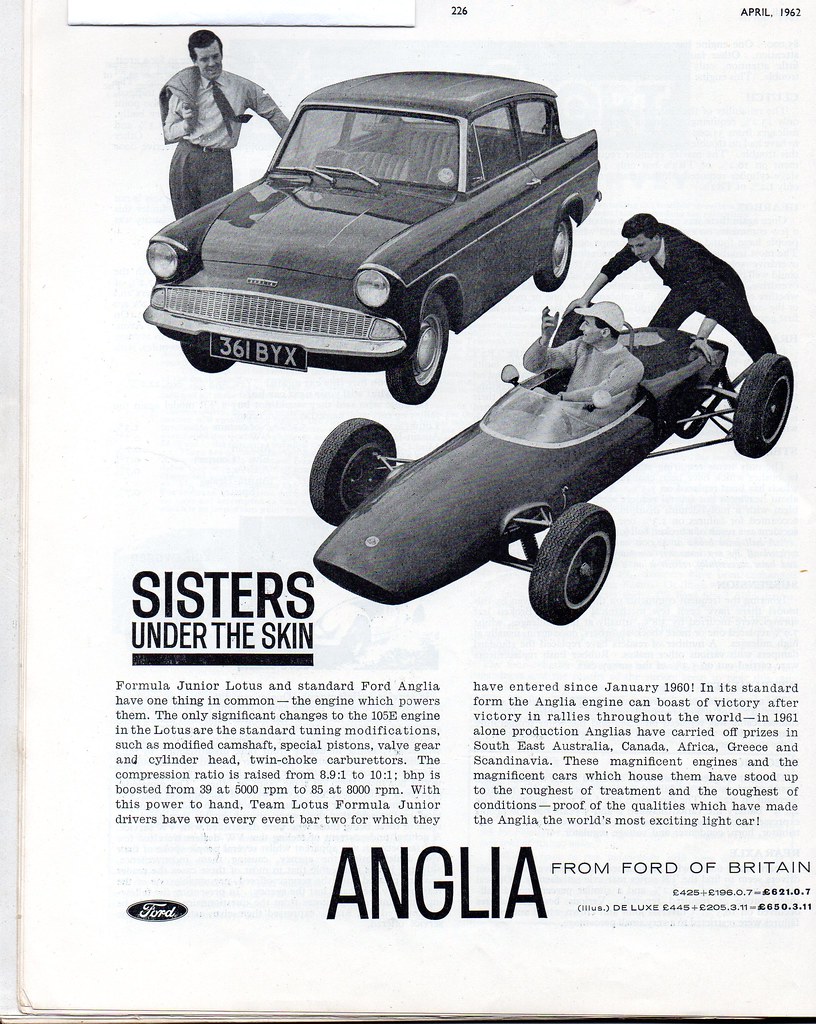
But what does all this have to do with the Consul Classic 315?
Simultaneously with the design and development of the 105E Anglia, another new car, the 109E Consul Classic 315, also known as the Consul 315 in export markets, was also designed and developed and it had much in common with the new Anglia. Ford recognised that the gap between its small car range and the rather bulky Consul Mk2 needed filling, to compete with cars like the Minx, the Victor and the BMC Farina B-series cars. What better than to share the greatest part of the development and tooling costs between their new small and medium-sized cars by using basically similar engines, gearboxes and axles? The ultra short-stroke (48.44mm) 105E engine could easily be increased in capacity simply by substituting a longer-throw crankshaft and shorter connecting rods. The bore would remain unchanged at 80.98mm for a range of capacities.
The Classic was scheduled for introduction 6 months after the Anglia. It had a long, low and wide appearance with the innovations (on a medium-size car) of dual headlights and front disc brakes. The huge boot was accentuated by the reverse-rake rear window and the flat rear deck culminating in curved-over rear 'fins' with paired rear lights beneath and a full-width inset rear panel. The look was evocative of some of the huge, highly stylised designs seen in late 50s America and was calculated to wow the increasingly affluent British upper working class.
Consul Classic 315 Deluxe 4-door
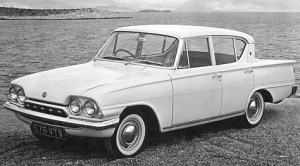
And so might it have been.
So successful was the new Anglia that Ford simply did not have the production capacity to put the Classic into the showrooms in 1960. There had also been difficulties with the enlargement of the 105E power unit. Those same accountants who had been so keen to share the costs between the two new cars had also seized upon a new type of crankshaft design which would reduce manufacturing costs. This was the nodular cast-iron, uncounterbalanced, hollow crankshaft, which was used successfully on the 105E but which, when the stroke was lengthened to give a 1.5 litre capacity for use in the Classic, caused excessive vibration and was also prone to snapping in half! Various stroke dimensions were tried until, at 65.07mm, giving the odd capacity of 1340cc, acceptable smoothness was achieved and the incidence of crankshaft breakage was reduced to the point where it was exceptional rather than routine. The 109E Consul Classic 315 used the same gearbox with non-synchro first gear as the Anglia , but had a higher rear axle ratio, soon also to be used on the Anglia when optionally fitted with an 1198cc variant of the new engine.
Apollo design study
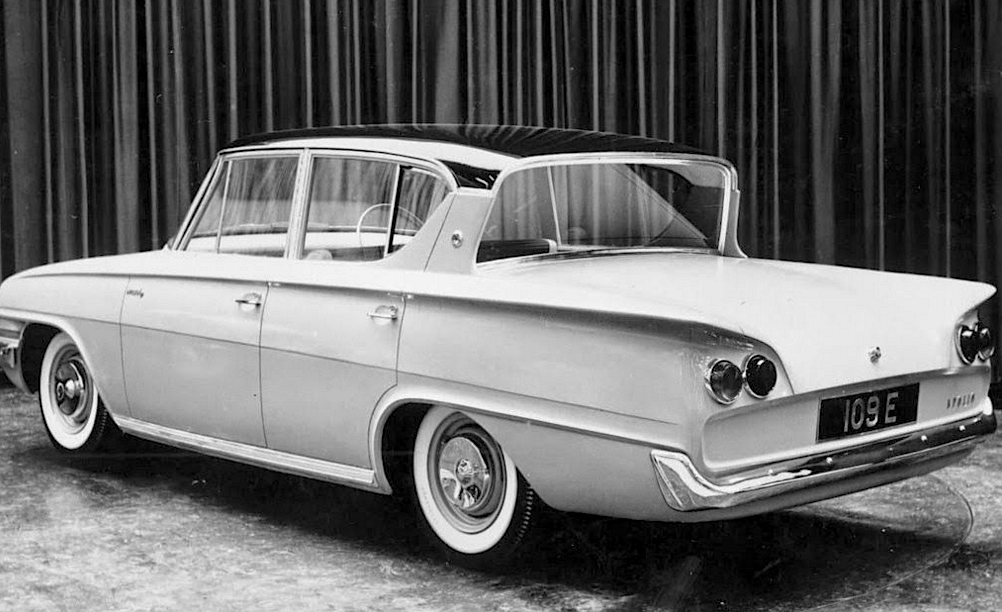
Finally, in May 1961, the car was launched, with much advertising and hullabaloo. Road test reports were generally favourable, although the fact that the engine was smaller than those of its competitors was always the subject of comment. The performance was actually more than competitive under most conditions and the fuel economy was good. Only when the car was heavily loaded did the rather small engine with its somewhat crude 3-bearing, uncounterbalanced crankshaft, disappoint, becoming quite coarse at the higher engine speeds adequate progress then required. Over time crankshaft breakages occurred rather too often to escape notice.
The styling was much admired by some and greatly disliked by others. It did not entirely fit with the early 1960s trend towards extreme simplicity of line. The car didn't sell badly and production totalled just over 109,000 in a little over 2 years, by which time the Classic was prematurely dead, despite a mid-life rejuvenation, when the model received the 1498cc 5 main-bearing engine and all-synchro gearbox it might have had from the start.
A coupe version, the Capri, had been introduced a few months after the Classic and that car lasted into mid-1964, latterly with the option of a 78bhp 1500 engine as the Capri GT. Total sales of the Capri were around 19,000.
Why did the Classic fail? With sales of Classics and Capris totalling 128,000 in 3 years, it is arguable that it did quite well when compared with sales of around 80,000 units for the successful Jaguar Mk2 over 10 years and a similar number of the big BMC 2.9 litre saloons over 9 years, but the Classic was aimed at a much larger market sector and there seems little doubt that the controversial styling, hitting the market a little too late, combined with a numerically off-putting engine which soon gained a reputation for snapping crankshafts did much to deter potential customers. The Classic 1500 was a great improvement but Ford really should have got it right first time. By 1963, when the Classic was discontinued, Ford was selling every Cortina it could produce and had the derivative Corsair ready and waiting to replace the Classic as a slightly more upmarket offering. Both cars were carefully developed to provide everything the Classic had but at a much lower cost of production, with their far simpler and lighter bodyshells. Had the Classic appeared, as planned, with a really good 1.5 litre engine (perhaps with a steel, counterbalanced 3-bearing crankshaft) in early 1960, things might have been somewhat different, but one thing is for certain, whichever way you look at it, ”It was the accountants wot killed it!”, both at the beginning and at the end.
This writer has had four Consul Classics, a 4-door 1340 basic, a 2-door 1340 basic, a 4-door 1500 Deluxe and a 2-door 1500 Deluxe. If I could have another it would have to be a 1340 4-door. Why? Because that was my first car, at the age of 17, but I would hope that it was in better condition than mine was at 10 years old! I for one loved the styling but hated to be told it looked like an Anglia! The 4-door was definitely the better proportioned. Perfect. A work of art. Not a bad car either.

